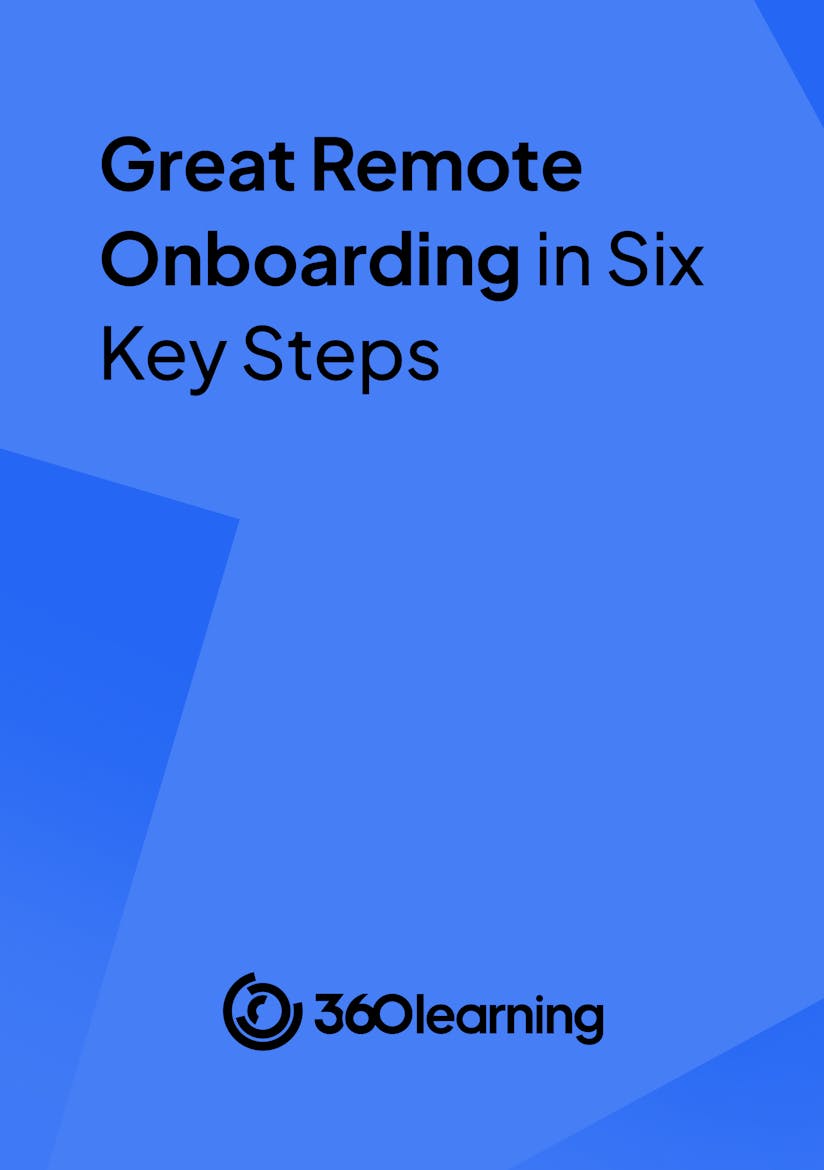
The way we work has undergone a dramatic transformation. With remote and hybrid models becoming the norm rather than the exception, leaders must adapt to new dynamics that challenge traditional management styles.
Communication, collaboration, and team cohesion now require a new balance between flexibility with accountability, putting new strain on managers and team leads.
And that’s where Learning and Development can help. I recently spoke with Wayne Turmel, co-author of The Long-Distance Leader: Revised Rules for Remarkable Remote and Hybrid Leadership. We explored if (and how) leadership has fundamentally changed, the challenges of asynchronous and hybrid environments, and what leaders can do to foster strong team cultures and productive collaboration.
Wayne is a fascinating thinker and researcher, and a highly engaging speaker. As always, I encourage you to listen to the conversation in full.
Below, I share five of the biggest takeaways from our conversation.

Avoid all the remote onboarding mishaps
By providing your contact info, you agree to receive communications from 360Learning. You can opt-out at any time. For details, refer to our Privacy Policy.
Why “hybrid” work environments often disappoint
In the post-Covid era, the right balance between fully remote and fully in-office workplaces is a hot topic for debate. While we’ve seen several high-profile back-to-office mandates, most organizations accept that the modern work environment sits somewhere between the extremes.
But in too many cases, this hybrid dynamic has been hastily crafted, leading to unsatisfying results.
In Wayne’s view, the scale of change requires a far more considered response from organizations. “We’re in the middle of the most seismic change in the workplace since the 1920s. Back then, it was commuter culture and the idea of the 40-hour work week. Now, we’re in that same craziness where things are changing but nobody knows where it’s going to wind up.
“Some people continue to work remotely, and some are returning to the office. Now, what most people have is not really ‘hybrid’ work—it’s a hostage negotiation. How much can we make them come back to the office before they all quit? And how much can I whine about coming back to the office before they fire me?
It all sounds very familiar. So what are so many companies getting wrong?
“Hybrid isn’t just about the work that gets done in the office versus at home. It adds the concept of time: what gets done, where, and when. The work that gets done in the office should be different. It’s the social work, the meetings, the brainstorming, and the teambuilding. And when people are working from home, they can actually do deep work without being interrupted.
“That’s when you become truly strategic about it—that’s when it becomes truly hybrid.”
What most people have is not really ‘hybrid’ work—it’s a hostage negotiation. How much can we make them come back to the office before they all quit? And how much can I whine about coming back to the office before they fire me?
How to lead in the new work environment
The rate and magnitude of change puts new pressure on leaders and frontline managers. But from Wayne’s perspective, the actual outputs required of managers are basically the same.
“If we think about what a good leader needs to do, nothing has changed. We need to set the vision, to manage performance, and to delegate. But we are mediated and mitigated by technology. We can’t just magically appear at somebody’s desk to see what’s going on.”
So what should managers—and the L&D experts working with them—do to ensure that their teams function well in this new environment?
“As leaders, we should be intentional about what we’re doing. Do I really need to have this meeting? Or are we having it because it’s Tuesday and we always meet on Tuesdays? Maybe Bob doesn’t need to be in that meeting. If we run on autopilot and just do things the way we’ve always done them, we’ve probably got a lot of wasted energy and a lot of unproductive work going on.”
A key aspect to this is working to the strengths of each team member, and avoiding arbitrary routines that don’t suit certain working styles.
“We need to think back to first principles. What is the work that needs to be done? And what is the best way for that work to be accomplished?”
Watch out for “proximity bias”
We’re now in a dynamic where each individual’s version of hybrid work may be different. Some employees naturally spend more time in the office, while others are fully remote.
It is therefore absolutely critical that leaders avoid giving more time to those they see in person.
“It’s a perfectly natural thing,” says Wayne. “We build stronger and better relationships with people we see all the time and are physically close to us. Leaders need to be aware of that and given help to have quality one-on-one conversations. And they also need peripheral vision to see when this is happening on the team. Very often cliques form on hybrid teams. People in the office naturally turn to the person next to them, or who they’ve known for five years.
The most important thing that you and your managers can do about this is to pay attention. Watch out for instances where physical proximity leads to certain people being left out, or those in office gaining privilege.
“One of the most corrosive things on a team is exclusion—people being left out of conversations and opportunities to contribute. This can create disengagement and other unintended consequences.”
Promoting culture through learning
A key objection or challenge to hybrid work is the impact on company culture. When people are physically distant, it can be harder to build the bonds that so many great companies thrive on.
“Most companies just see their culture as how we do it here,” says Wayne. “But what are the things you do to create a culture? There are three components to consider:
- Communication. How and when do we communicate? What tools and tone do we use?
- Collaboration. How the work gets done. Have you really stopped and looked at the work that needs to be done, and what needs to be done synchronously and collaboratively?
- Cohesion. What kind of team do you want to have? Some organizations are very serious, competitive, and outcome driven. Others are very big on fun. Both can be great, and lead to decisions about how things happen.”
Building a cohesive company culture goes far beyond Learning and Development. But L&D leaders have a part to play in bringing people together.
“There’s a social component to learning which impacts culture. Many organizations have learned that they need fewer team-specific training events, and more training that brings people together from across the organization. So that we’re actually meeting in departments that we wouldn’t normally meet and can develop internal networks.”
Effective learning can (and should) be delivered through a mix of real-time classes and conversations and asynchronous assessments and assignments. It’s hybrid work in action, and L&D can help to set the standard for the entire business.
What L&D teams should focus on for better hybrid work
In our conversation, I asked Wayne directly what he would ask of Learning and Development departments as they help guide organizations through this shift. His first suggestion was highly pragmatic.
“Writing! In the 30 years since email rolled out in the work place, we’ve seen a massive shift. 70% of knowledge work now gets done in writing. Texts, Slack messages, emails, whatever. But when was the last time you got any training or coaching on your writing?”
Wayne also has a specific prescription for better and more productive meetings. “Have you ever showed up for a meeting and the first half was all context? Here’s the problem, here’s what we’re trying to solve. Then a really quick brainstorm, and everybody leaves. As you’re walking down the hall, you think of five things you should have said in the room.”
With just a little forethought and planning, meetings can become impactful and even enjoyable.
“What if we took time asynchronously to consider the context, prepare thoughts, and come with some ideas? When we’re together, we do the brainstorming, the problem solving, and bounce off each other. That can be incredibly productive and actually really fun. We get a better quality output and waste a lot less time sitting in a conference room.”
A successful hybrid environment doesn’t happen by accident
The word that came up repeatedly throughout my conversation with Wayne was intention. As he repeated early and often, the core expectations of leaders and L&D teams haven’t really changed post-Covid. But we need to think a bit more critically about how we achieve them.
Give employees the chance to work how, where, and when suits them best—within reason, of course. You may find better engagement, more productivity, and an overall happier workforce than you might have hoped.
About Wayne Turmel
Wayne Turmel is the co-author of The Long-Distance Leader: Revised Rules for Remarkable Remote and Hybrid Leadership and a recognized authority on leadership in remote and hybrid work environments. As co-founder of the Remote Leadership Institute, Wayne has dedicated his career to equipping leaders with the skills and strategies needed to thrive in distributed workplaces.
With decades of experience in communication and leadership training, he has written multiple books on leadership, team collaboration, and professional development. Wayne is also a sought-after speaker and podcast host, known for his practical advice and engaging storytelling that resonate with leaders across industries.




